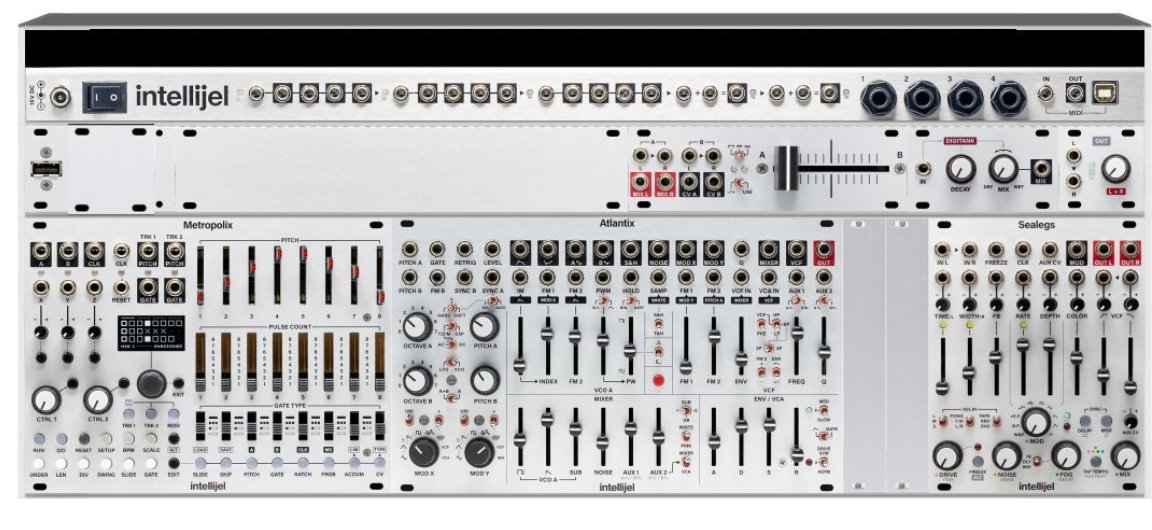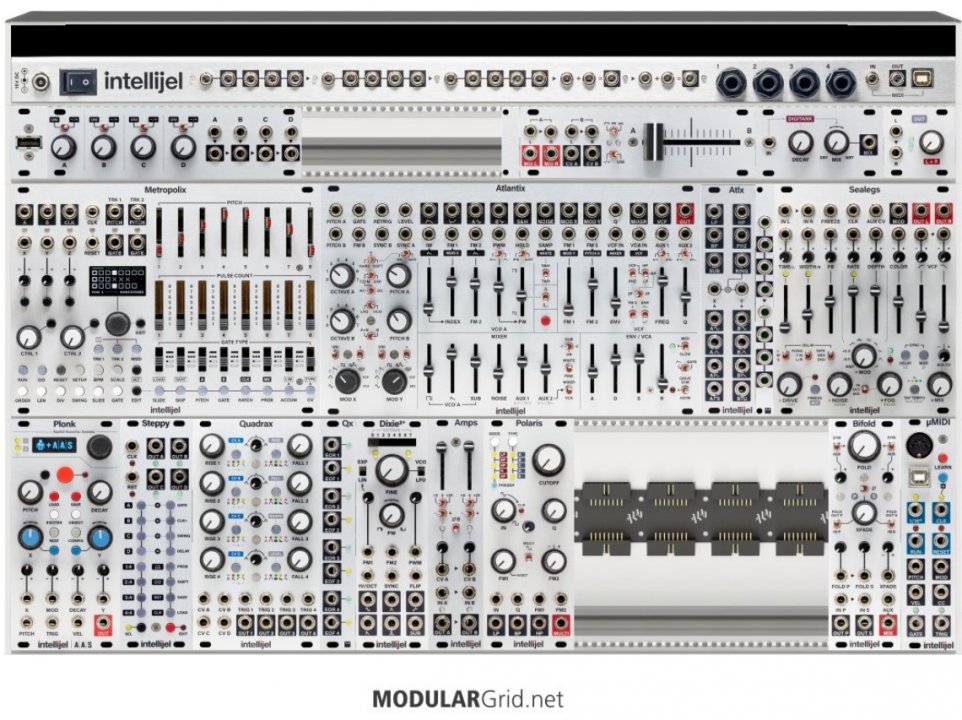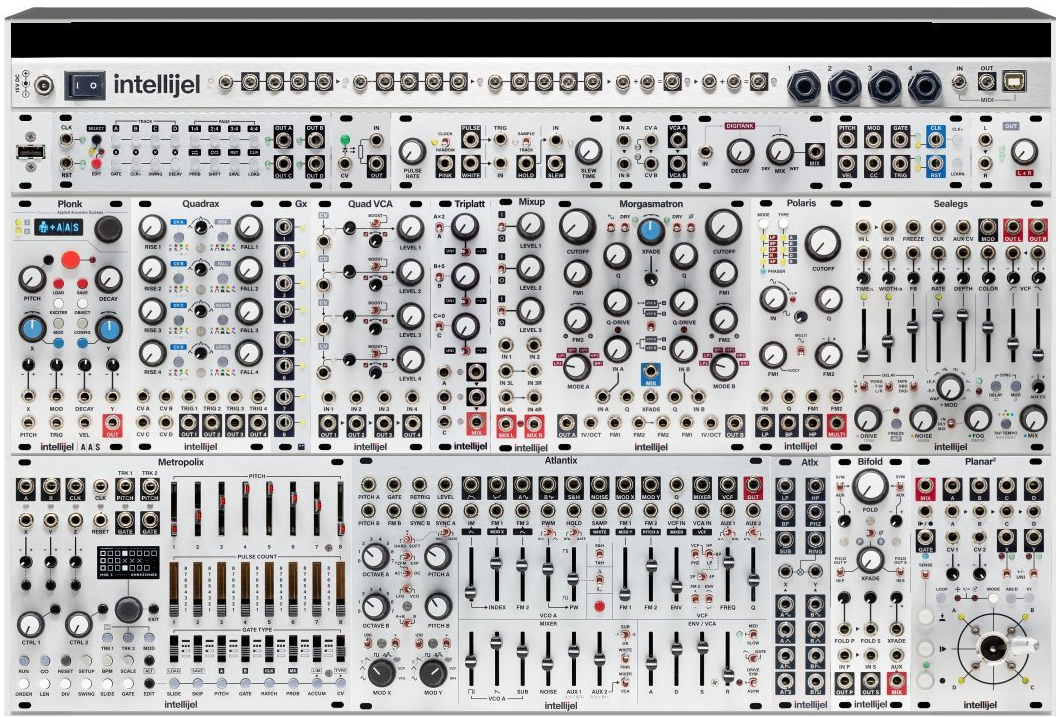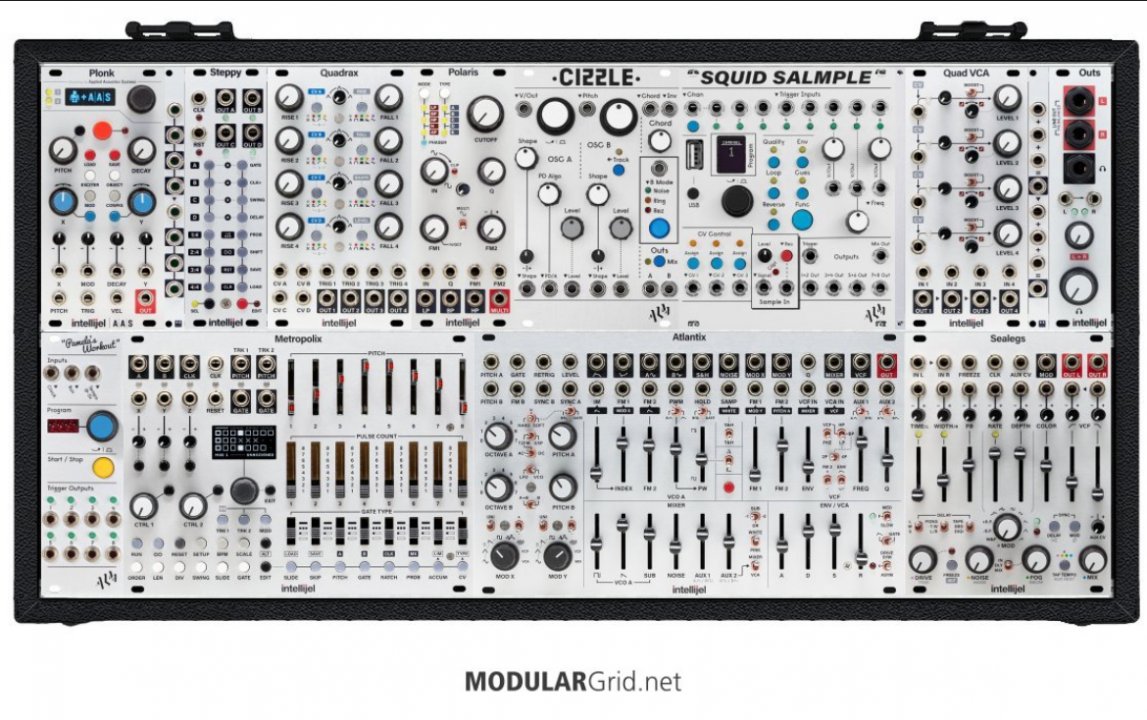I have used hardware synthesizers before. I used Elektron DN and M:C until recently. I then had a Pulsar 23 on loan for a month. That changed everything for me, I miss the melodic part with this synth but the linking of dots and the tinkering and losing in such a direct way of working has kept me going ever since.
I'm now reading a book about synthesis, it's very dry but easy to understand, I just can't think of the title. Back to my project.
I would like to perform with the modular synth. In the beginning maybe in combination with the Model Cycles, later I would like to get another 104hp case and build the drum part in it. I've limited myself to intellijel because I'm on the autism spectrum and because I think it makes sense to use the design / workflow of a manufacturer. I always read how others like the variety of advantages of Eurorack. I love limitations and at the same time the idea of a well thought out concept. I have of course looked at many manufacturers. I also liked ALM - both the sound and the ideas. I'm thinking about building my drum part with it (I really like the FM synthesis of the MS and they seem to have a thing for it). Although I also really like Plonk from intellijel. I could imagine two or three in a row.
I have considered whether the Cascadia would also be an alternative but semi modular feels too indecisive for me at this point.
Oh well, I had a question about my rack. Does it make sense? What else could be added to u1? For performance I would still have to harmonize the M:C - even if it might be more exciting without MIDI. No matter
I look forward to any objections and suggestions. Thanks a lot
Tipasa 



